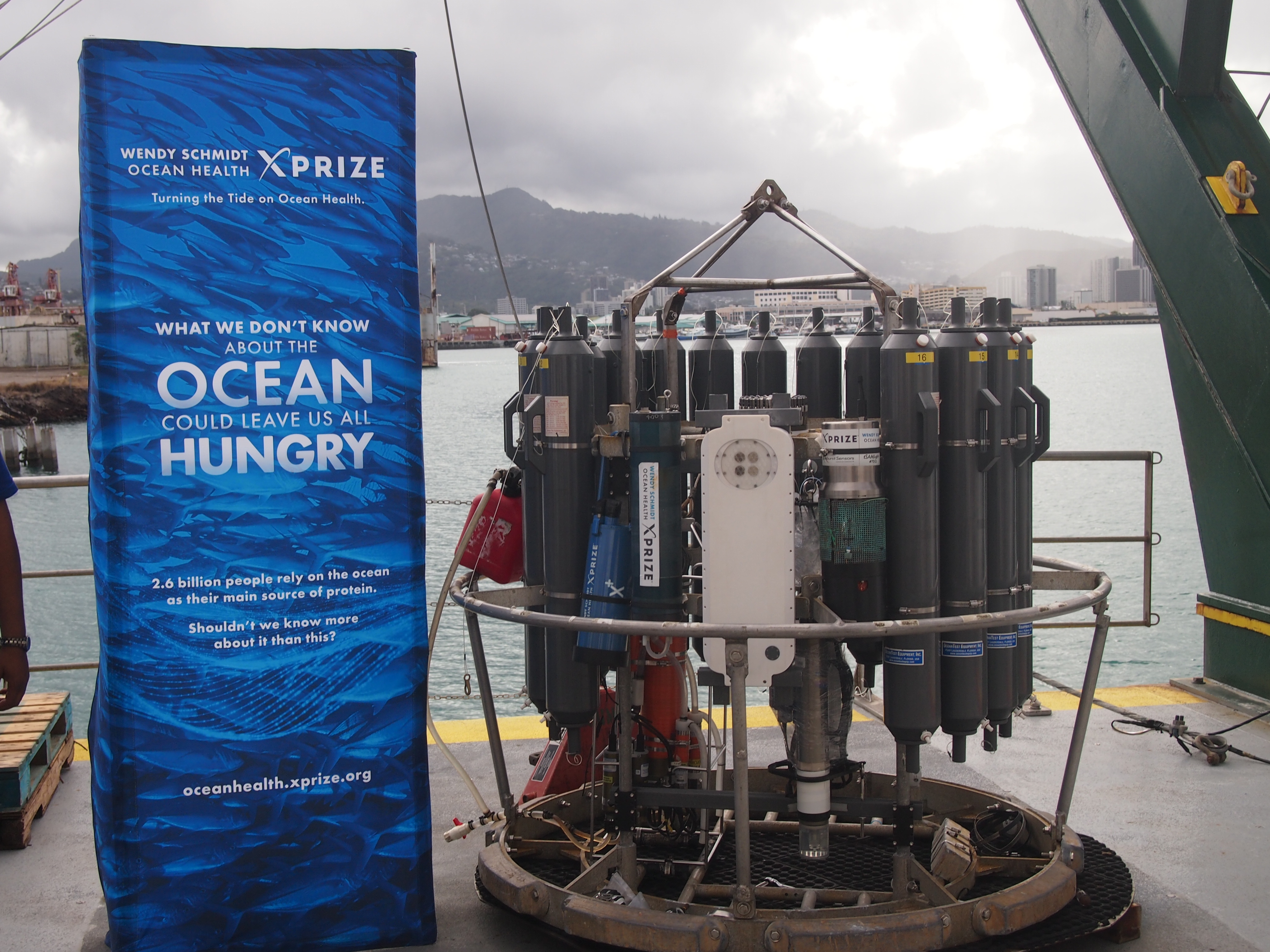NOPP Projects Win in Wendy Schmidt Ocean Health XPRIZE
Two of the three winning teams in the Wendy Schmidt Ocean Health XPRIZE competition were projects under the National Oceanographic Partnership Program.
The Wendy Schmidt Ocean Health XPRIZE competition, totaling $2 million, challenged teams of engineers, scientists, and innovators from all over the world to create pH sensors that can affordably and accurately measure rising levels of acidity in our ocean’s shallowest waters to its deepest depths.

Credit: Sea-Bird Scientific
Ocean acidification is having profound effects on the health of shellfish, fisheries, coral reefs, and other marine ecosystems that rely on a specific range of pH to be healthy and productive. Although acidification is well-documented in some temperate zones, little is known about pH trends in high latitudes, coastal areas, and the deep sea. Up until now, such sensor technologies were too costly, imprecise, unreliable, or simply too difficult to dispatch to remote regions, but these prize-winning sensor technologies are expected to close those gaps.
The Wendy Schmidt Ocean Health XPRIZE had two prize purses available:
- $1,000,000 Accuracy award – Performance focused ($750,000 First Place, $250,000 Second Place): To the teams that navigate the entire competition to produce the most accurate, stable, and precise pH sensors under a variety of tests.
- $1,000,000 Affordability award – Cost and Use focused ($750,000 First Place, $250,000 Second Place): To the teams that produce the least expensive, easy-to-use, accurate, stable, and precise pH sensors under a variety of tests.
Twenty-four teams from around the world competed in the challenge, and after months of testing in the lab, in saltwater tanks in California, and in the ocean in Hawaii, the winners were selected.
The team that won 1st place in both Accuracy and Affordability was Sunburst Sensors and their high-quality chemical sensors SAMI-CO2 and SAMI-pH (Submersible Autonomous Moored Instrument). The redesign and commercialization of both the SAMI-CO2 and the SAMI-pH were supported by grants in 2005 and 2008 under the NOPP. In 2011, the SAMI-CO2 and SAMI-pH sensors were selected by the Ocean Observatories Initiative (OOI) to develop a global network of ocean observing systems to collect physical, chemical, geological, and biological information on the ocean and the sea floor. These sensors are currently in use by numerous oceanographic institutions and federal agencies in the US; additionally, Sunburst Sensors has over 20 international customers.
The team that won 2nd place in Accuracy was Team DuraFET and their Deep-Sea DuraFET pH sensor system which received a grant in 2009 under the NOPP and won the 2014 Excellence in Partnering Award. Their sensors have now been launched on 20 profiling floats at sites ranging from the tropics to the ice-covered waters of Antarctica. These floats are of the same type used in the Argo array and operate to depths of 2 km and have a five-year lifetime. The Deep-Sea DuraFET sensors also serve as a core tool for the Southern Ocean Carbon and Climate Observations and Modeling Program. Sea-Bird Scientific is currently transitioning this high-pressure sensor to become commercially available.
A third team, ANB Sensors from the United Kingdom, won 2nd place in Affordability.


